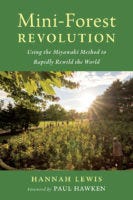Miyawaki Report Apr-May 2022
for Richmond Miyawaki Forest Cheerleaders
Some Significant Recent Local Events
We celebrated Earth Day April 22 at the site of the future Miyawaki forest at RSS Richmond Secondary School. At least 200 people participated during the three hour event which featured indigenous speakers and dancers, RSS musicians, popcorn-fundraising makers from PIEL (Earth Literacies) and a Miyawaki Pocket forest demonstration with nearly 20 people digging one meter deep to prepare 1% of a full sized native forest.
We now have five nurseries able to supply us with native plants. So far we have acquired plants from EYA and Plan Bee; GCCS members have also donated plants.
Part of the Birdhouse backyard lawn was converted to a Pollinator Meadow during a joyous work party with nearly 20 people
We were able to secure another grant (Neighbourhood Grants) to help restore the bog at the GCL in partnership with KPU. One of the Kwantlen students, Rue, is doing a research project to test the use of the “Camosun bog method” (scraping top layer) and comparing different methods of hydrating the bog during the dry season.
25 grade 5-6 students from Ferris Elementary participated in yet another propagation workshop and Miyawaki Forest demonstration sponsored by the RSS Green Team. They also presented the method to Richmond Teachers during the May 20th Pro-D day.
Significant Information and Resources
We are looking forward to the first ever Canadian book on the Miyawaki Method
It will come out in June 2022 but you can read this excerpt which is mainly about how it is applied in Paris.
We attended our third Little Forest Canada Meetup - led by Erin from Nature Canada
attendance: Sharon, Elaine, Bruno as well as around 20 people mostly from Ontario
currently most Miyawaki funding goes through Tree Canada
Kingston is experimenting with success with GoFundMe (aiming for $20k)
2 billion tree program (federal program) has 3 billion CAD committed
pays 50% of the costs (so co-funders are needed)
minimum 10,000 trees planted in overall project
some Miyawaki projects have applied
Nature Canada is advocating for the “rights of trees”
Kingston + Canplant report:
already three forests planted, three more coming up this year
business and schools challenge each other
Rotary Club and City Public Works partnership
do capacity building BEFORE starting projects
goal: a Miyawaki forest in every neighbourhood
Order plants now for FALL planting
also does pocket food forests using bareroot saplings in Spring
U.N. City Tree Challenge - Vancouver applied
Finally: SUGi Newsletters #19 and #20 are worth noting:
Yakima Miyawaki Forest (Washington State) update and movie:
The SUGi Miyawaki Method step by step:
A simplified step by step Miyawaki method for creating dense, diverse pockets of native forest.
1) Species selection:
When planting a Miyawaki forest, the first step is to identify the native vegetation best suited to the area being planted, termed Potential Natural Vegetation. To establish this, our forest makers do intensive research, often involving the indigenous community. They look to see what is growing locally, in protected areas or old-growth forests.
Forests are multi-layered, and as the Miyawaki method mirrors nature, we identify and plant four layers of vegetation, building a resilient green wall of canopy trees, trees, sub-trees and shrubs. We select up to 40 different species to create balance and maximise density.
2) Preparing the soil:
The second step when planting a Miyawaki forest is soil preparation. Since SUGi focuses on rewilding nature-deprived areas, the soil is often degraded, compacted, waterlogged or bacteria-dominant. However, trees need fungi-dominant, soft and crumbly soil, so their roots can establish faster and have better access to nutrients.
Our forest makers work the soil once to restore the missing biology and put it on the path to becoming oxygenated, fertile and self-sustaining. Compost tea is also added to the earth as it’s turned; this contains strains of beneficial fungi (known to interact with the specific tree species) and a stimulant, such as molasses or liquid seaweed, to give the fungi fuel to grow.
3) Planting the saplings:
Once the soil is prepared, SUGi Pocket Forests are planted with the help of the community. We plant three to four saplings per square metre in a random manner that mirrors how natural forests grow. We choose to plant young saplings, as they’re more adaptable and can form symbiotic relationships with mycorrhizal fungi in the soil far quicker than an older tree.
The denseness of a Miyawaki forest isn’t just great for creating biodiversity; it also increases carbon capture, pollution filtration and produces an area more resilient to flooding and landslides. Increased canopy cover reduces the amount of rainfall that hits the ground, increases shade and promotes cooling. Not to mention the green-wall effect of the multi-layered trees, which acts as a shield if there’s ever a storm surge.
4) Mulch & Maintenance:
When you’ve planted the saplings, the final step is to apply a compost tea and mulch heavily using straw. The mulch protects the soil and retains moisture. Species such as earthworms, beetles and other insects feed from the top-down, building soil fertility by pulling the mulch into the ground for it to be broken down by microbes. As mulching helps the soil retain moisture, you do not have to do as much watering. The more fertile the soil, the more water it holds.
Survival rates should always be above 80% and often above 90% - if the projects are carried out properly. Normally after two to three years the forests are 100% self-sustaining and handed over to nature.

